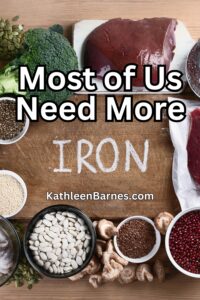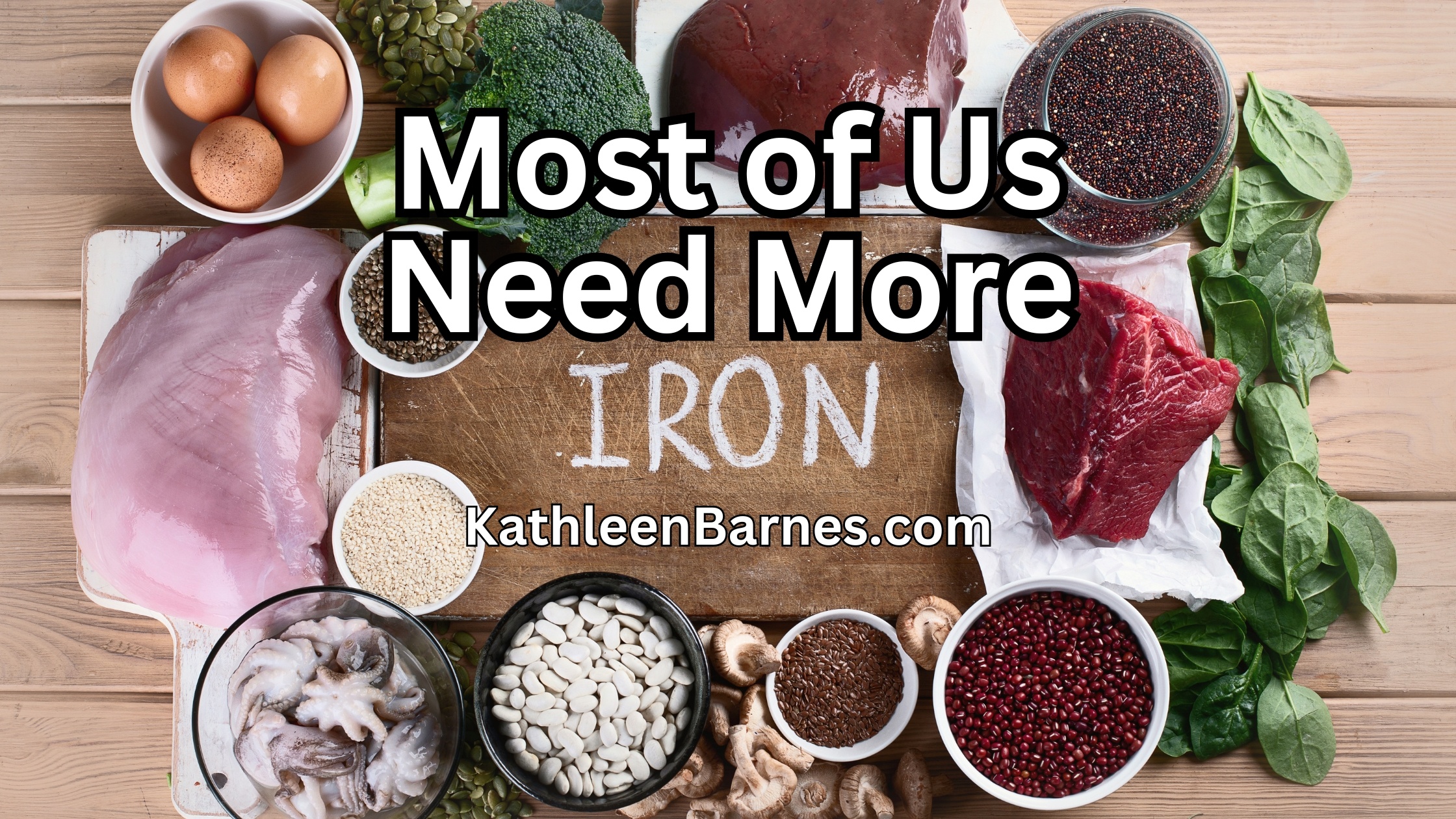 When my friend May complained of extreme fatigue, I wasn’t surprised. She did look pale and drawn, but when you have a four-month old baby and three other children, the oldest 13, anybody would be tired and pale and drawn.
When my friend May complained of extreme fatigue, I wasn’t surprised. She did look pale and drawn, but when you have a four-month old baby and three other children, the oldest 13, anybody would be tired and pale and drawn.
Tara, May’s 13-year old daughter was complaining of fatigue, too, and I thought the teenager looked a little pale under her out-of-a-bottle tan.
Of course! It made sense that both May, a lactating mother, and Tara, a teenager, were probably suffering from iron deficiency, especially since both of them had recently decided to become vegetarians.
I suggested they check with a doctor and get a simple blood test, which confirmed that both of them were anemic, meaning they had low levels of iron in their blood.
Iron deficiency anemia, as it is commonly known, means the red blood cells aren’t capable of carrying enough oxygen to the tissues. These same red blood cells are an essential part of the process of converting food to energy. No wonder low iron intake can make you feel tired and draggy!
May was at particularly high risk for iron deficiency anemia because of her recent childbirth and her body’s increased need for iron because she was breastfeeding.
Tara, who had recently reached puberty, was also at increased risk because of blood loss through menstruation.
Both of them increased their risk by avoiding animal protein, a primary source of dietary iron, although iron is available in small amounts from legumes, green leafy vegetables and fortified cereals.
They’re not alone. In the United States, 20 percent of all women of childbearing age suffer from some sort of iron deficiency.
Of all nutrient allowances, the allowance for iron is the most difficult to obtain from dietary sources. This is why iron deficiency is the most common single nutrient deficiency in the world.
Not only are women more susceptible to iron deficiency, it is harder for women to take in enough iron-rich food, with a balanced diet, to meet the recommended intakes of 8 mg. mg. per day for men, 18 mg. per day for women and 27 mg. per day for pregnant women. While very few men are iron deficient, the U.S. National Institutes of Health estimates that about half of all pregnant women worldwide are iron deficient.
Many children suffer from iron deficiency as well. Infants under the age of one year need 11 mg. of iron per day and toddlers up to the age of 3 need 7 mg. a day. Breast-fed babies need less iron need less, because iron is absorbed three times better when it is in breast milk.
However, cow’s milk often fed to babies or consumed by adults can actual interfere with iron absorption. Swedish research confirms that calcium on cow’s milk actually acts as an iron blocker.
The iron you get in food is not very efficiently absorbed you’re your body. In fact, only about 10 to 15 percent of dietary iron is bio-available. That means you’re getting less that 2 milligrams of iron in your serving of chicken livers that supposedly contains 12.8 mg.
Iron supplementation is an easy answer for most women. It’s contained in many multi-vitamin supplements and it’s a part of many mineral formulas.
Iron sulfate is the most common form of iron supplement found on the market, although it can irritate the digestive tract. Iron glycinate, iron fumarate and iron gluconate are less irritating and less likely to cause constipation. Most women need 20 mg and 30 mg. if they have been diagnosed with iron deficiency anemia.
Iron Content of Common Foods
| Chicken liver, cooked, 3½ ounces | 12.8 | 70 |
| Oysters, breaded and fried, 6 pieces | 4.5 | 25 |
| Beef, chuck, lean only, braised, 3 ounces | 3.2 | 20 |
| Clams, breaded, fried, ¾ cup | 3.0 | 15 |
| Beef, tenderloin, roasted, 3 ounces | 3.0 | 15 |
| Soybeans, mature, boiled, 1 cup | 8.8 | 50 |
| Lentils, boiled, 1 cup | 6.6 | 35 |
| Beans, kidney, mature, boiled, 1 cup | 5.2 | 25 |
| Beans, lima, large, mature, boiled, 1 cup | 4.5 | 25 |
| Beans, navy, mature, boiled, 1 cup | 4.5 | 25 |







